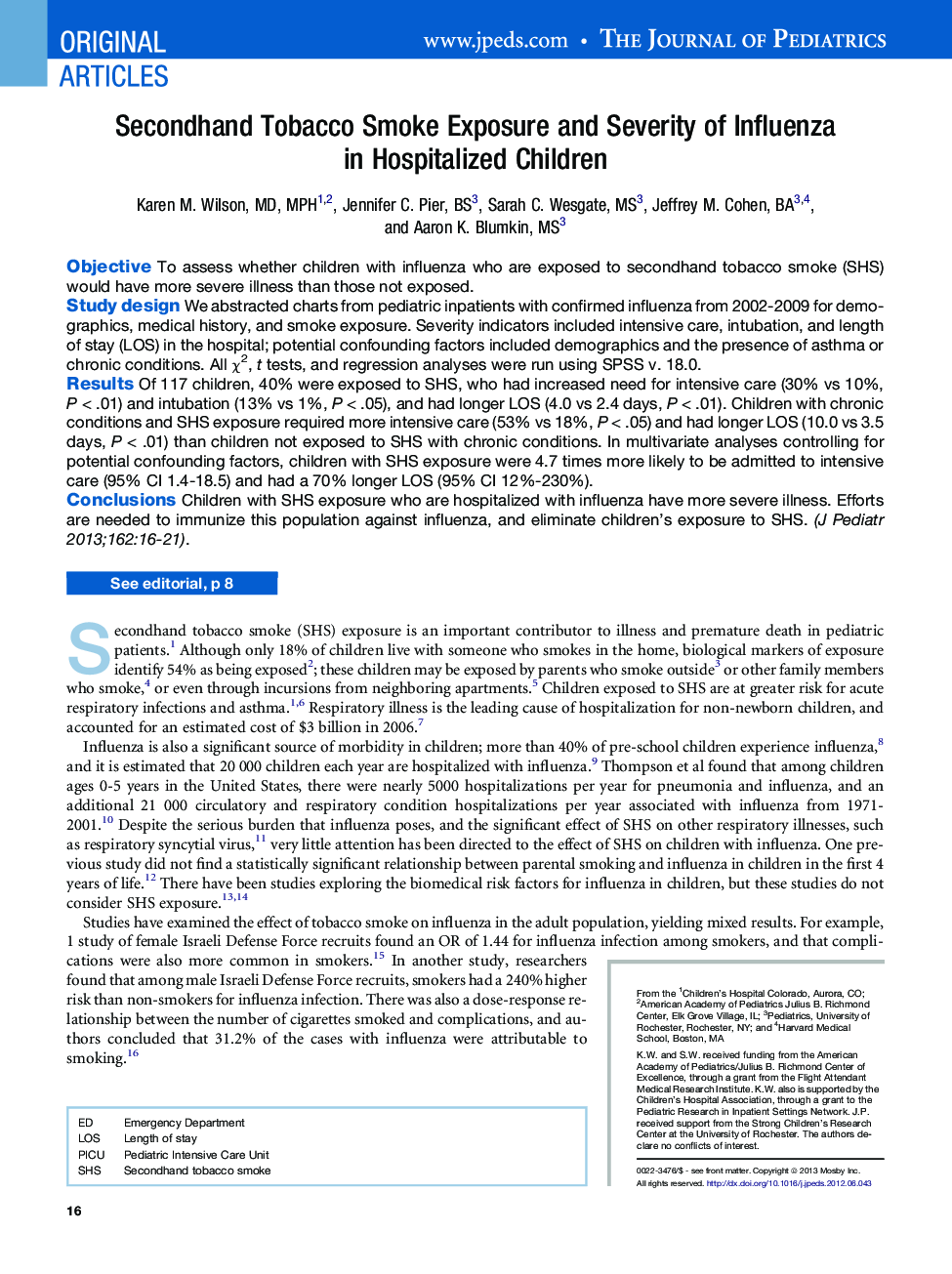| Article ID | Journal | Published Year | Pages | File Type |
|---|---|---|---|---|
| 6224302 | The Journal of Pediatrics | 2013 | 6 Pages |
ObjectiveTo assess whether children with influenza who are exposed to secondhand tobacco smoke (SHS) would have more severe illness than those not exposed.Study designWe abstracted charts from pediatric inpatients with confirmed influenza from 2002-2009 for demographics, medical history, and smoke exposure. Severity indicators included intensive care, intubation, and length of stay (LOS) in the hospital; potential confounding factors included demographics and the presence of asthma or chronic conditions. All Ï2, t tests, and regression analyses were run using SPSS v. 18.0.ResultsOf 117 children, 40% were exposed to SHS, who had increased need for intensive care (30% vs 10%, PÂ <Â .01) and intubation (13% vs 1%, PÂ <Â .05), and had longer LOS (4.0 vs 2.4 days, PÂ <Â .01). Children with chronic conditions and SHS exposure required more intensive care (53% vs 18%, PÂ <Â .05) and had longer LOS (10.0 vs 3.5 days, PÂ <Â .01) than children not exposed to SHS with chronic conditions. In multivariate analyses controlling for potential confounding factors, children with SHS exposure were 4.7 times more likely to be admitted to intensive care (95% CI 1.4-18.5) and had a 70% longer LOS (95% CI 12%-230%).ConclusionsChildren with SHS exposure who are hospitalized with influenza have more severe illness. Efforts are needed to immunize this population against influenza, and eliminate children's exposure to SHS.
